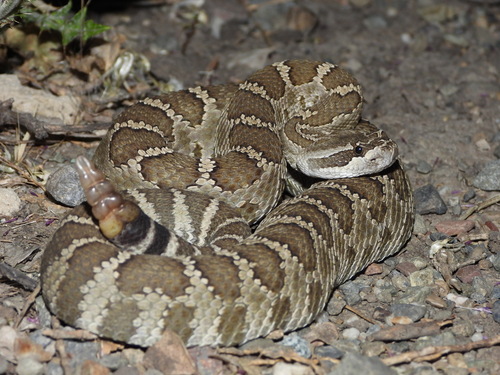
Western Rattlesnake
The Western Rattlesnake is a master of adaptation, using its iconic rattling tail and heat-sensing pits to thrive in varied landscapes from deserts to woodlands, playing a crucial role in controlling rodent populations.
15 years
Lifespan
Length: 1.524 m
Size
Brown, Grey, Yellow, Black, Tan, Dark, Olive
Color
2-3 years
Age of Sexual Maturity
Low
Aggression
Least Concern
Conservation Status
Stable
Population Trend
Distribution Range of the Western Rattlesnake
Crotalus oreganus, commonly known as the Western rattlesnake, is native to the western regions of North America. It is primarily found in the United States and Canada. In the U.S., its distribution includes states like California, Oregon, Washington, Idaho, Nevada, Utah, and parts of Arizona, Colorado, and New Mexico. In Canada, it is found in southern British Columbia.
Western Rattlesnake's Habitat
Environmental Conditions
The Western rattlesnake inhabits a diverse range of environmental conditions, from sea level to mountainous regions up to 2,700 meters (8,900 feet) in elevation. It is typically found in arid, semi-arid, and mesic environments. These snakes are known to inhabit grasslands, shrublands, woodlands, and forests. They are also found in rocky hillsides, deserts, and coastal dunes.
Ecological Niche
Crotalus oreganus serves as both predator and prey within its ecosystem. It predominantly preys on small mammals such as rodents, but it may also eat birds, lizards, and insects. This species plays a vital role in controlling the population of its prey species, thus maintaining ecological balance. Its habitat preferences are often determined by the availability of prey, suitable basking sites, and locations for brumation during colder months.
Copyright @ Nature Style Limited. All Rights Reserved.
 English
English